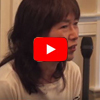Faith at Work, Part 2: Avodah and the Faith at Work Movement
Blog / Produced by The High Calling
Part 1, Part 2, Part 3, Part 4, Part 5, Part 6, Part 7
When Laity Leadership Institute Senior Fellow David W. Miller was studying biblical Hebrew in seminary, he discovered a concept that would come to define his work.
“As I was slogging through Hebrew vocabulary, I came across the word avodah. The root of that word is translated three ways in the Old Testament. Sometimes it’s translated to mean ‘work,’ as in a job; other times, avodah is translated to mean ‘worship,’ as in worshiping God; the third way it’s translated is to mean ‘service,’ as in serving others. That’s what my whole calling is about: avodah,” said Miller.
“Whether one is a secretary or a CEO, our work itself can be a form of honoring God, of worshiping God, and of serving neighbor. It combines the vertical and the horizontal. This concept has ignited me ever since,” he said.
In his 2007 book God at Work, Miller said the idea underlies the modern Faith at Work (FAW) movement.
“Regardless of job level or salary, today’s employees want their work to be more than just a way to put bread on the table and pay the rent. This modern quest for integration has ancient theological roots,” he wrote.
People want meaning and purpose in their work. and they don't want to compartmentalize their spiritual side from their work or everyday life.
A complete historical analysis of Christian thought on faith and work would include most of Judeo-Christian history, Miller said, and he traced that history from the Old and New Testaments through the Middle Ages, the Reformation, the Enlightenment, the Industrial Revolution, Marxism, Catholic social teaching, and the Social Gospel to a modern expression that emerged in the 1980s.
“The ‘faith’ part of the FAW movement is highly diverse, comprising nearly all of the major religions, including Judaism, Christianity, Islam, Hinduism, Buddhism, and noninstitutional forms of spirituality,” he explained, and “while the nature and content of our work may vary greatly, the FAW movement has been generated largely out of and focuses on what we commonly call our ‘jobs’: paid work in our place of employment.”
The rich theological history he describes “has fluctuated in emphasizing the spiritual and the material, at times lauding work as prayer and a virtue, while at other times viewing it as a curse and an earthly burden to be escaped; at times recognizing work as a spiritual calling, and at other times as mere secular labor; at times understanding that faith should be part of and inform all aspects of daily living, including work, and at other times seeing expressions of faith as limited to Sunday worship,” Miller wrote.
He has done far more than explore a fascinating topic, however.
When Miller was working on his PhD. in Social Ethics, Bill Pollard, then Chairman and CEO of ServiceMaster, became aware of his work. The men met and Pollard asked what Miller intended to do when he finished his education. Miller told Pollard his dream was to launch an organization dedicated to helping people integrate the claims of their faith with the demands of their work.
Pollard pulled a concept paper out of his desk and asked Miller to read it.
“I found myself almost finishing every sentence with my own words. So we launched The Avodah Institute, which was targeted to work with CEOs and business leaders who often feel disenfranchised from their church, assuming they even attend church,” said Miller of the organization he founded in 2000 while finishing his doctoral work, and continued to direct during his five years at Yale University.
In 2008, Miller joined the faculty of Princeton University, launching the Faith & Work Initiative, which is dedicated to the study of these issues. There he not only teaches the concept of avodah to emerging business professionals, but he introduces them to accomplished business leaders who demonstrate that it’s possible to live out avodah.
Miller is also active outside the ivory tower. In 2010, he and eleven other scholars from the three Abrahamic faith traditions—Judaism, Christianity, and Islam—met in Caux, Switzerland to reflect theologically on the recent global economic crisis, and to ask what ideas and resources religion has to offer to address the crisis.
He was a primary drafter and one of the core signatories of what became known as "The Mountain House Statement." On the Avodah Institute blog, Miller said this statement is significant because it “combines the resources of the Abrahamic faith into a unified and constructive approach at a time when conflict and divisiveness among and within these faiths are so sadly prevalent” and it “derives from the Abrahamic traditions very practical lessons for the conduct of finance and business.”
These lessons include the acceptance of limitations and the pursuit of humility, being constructive and not selfishly exploitative in fiduciary responsibilities, acknowledging that great power and great wealth dramatically increase the risks of business and financial failure from cupidity, negligence, and arrogance, and that religious conscience offsets these risks so it should be present in economic and financial undertakings.
As David Miller slogged through his Hebrew vocabulary list, he discovered an ancient word to describe a concept that he’s used to advance the Faith at Work movement. And like the ancient Hebrews, he couldn’t have imagined such far reaching consequences.
Image by Claire Burge. Used with permission.
Laity Leadership Institute Senior Fellow David W. Miller is founding Director of the Princeton University Faith & Work Initiative and an Associate Research Scholar at the university's Center for the Study of Religion. Dr. Miller spent 16 years in senior executive positions in international business and finance before entering academia and receiving his M.Div. and Ph.D. in Social Ethics. He is the author of God at Work: The History and Promise of the Faith at Work Movement and writes for The Avodah Institute's Faith & Work Blog.





